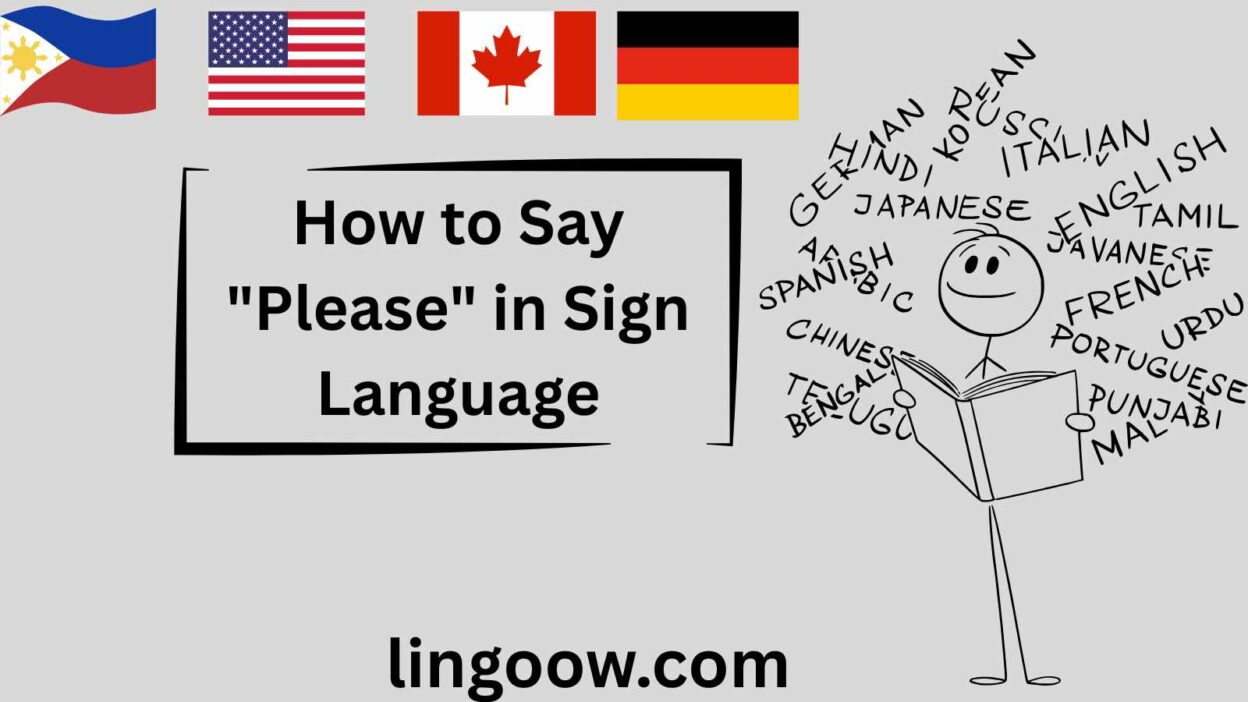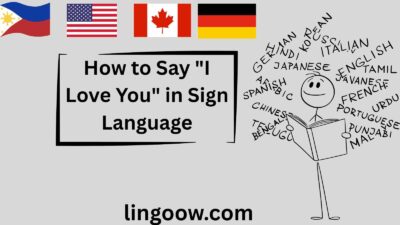Hey there, fellow wanderer of words and worlds! Imagine this: I’m standing in a bustling market in Marrakech, my hands fumbling awkwardly as I try to ask a kind vendor for a fresh tagine.
My spoken Arabic is nonexistent, but I flash a warm smile and sign “please” with a gentle open hand circling toward my chest—a universal gesture that transcends borders.
The vendor’s face lights up, and suddenly, we’re connected. No words needed. That moment? Pure magic. It hit me hard:
“please” isn’t just a word; it’s a bridge, a humble plea wrapped in grace, echoing the same human heartbeat across every culture.
In sign language, it’s even more poetic—a visual whisper of respect that unites the hearing and deaf worlds. Today, we’re diving deep into how to say “please” in sign language and beyond, exploring its spoken siblings in languages worldwide.
Why Because in a divided world, this tiny word reminds us we’re all just asking for a little kindness. Let’s journey together—your heart and hands ready?
Quick Reference Table: “Please” Around the World
Before we globe-trot, here’s your handy cheat sheet. I’ve curated 15 diverse languages (with room to expand in sections below) to get you started. Each includes the word/phrase, pronunciation guide, and a cultural nugget.
| Language | Word/Phrase | Pronunciation Guide | Cultural Insight |
|---|---|---|---|
| English | Please | Pleez | Rooted in 14th-century French; embodies British understatement—less is more in politeness. |
| French | S’il vous plaît | Seel voo pleh | Formal respect; used in elegant Parisian cafes to honor social hierarchy. |
| Spanish | Por favor | Por fah-vor | Warm and relational; in Latin America, it’s a family staple for heartfelt requests. |
| Italian | Per favore | Pair fah-voh-ray | Passionate flair; Italians infuse it with gestures for extra charm in daily banter. |
| German | Bitte | Bit-uh | Direct yet polite; reflects Teutonic efficiency—short, sweet, and always appreciated. |
| Mandarin | Qǐng | Ching | Hierarchical; elders use it to teach respect in Confucian family dynamics. |
| Hindi | Kripaya | Kree-pah-yah | Spiritual roots; tied to “krpa” (mercy) in Indian epics like the Mahabharata. |
| Japanese | Onegaishimasu | Oh-neh-guy-shee-mas | Deep bows accompany it; embodies “wa” (harmony) in group-oriented society. |
| Korean | Jebal | Jeh-bahl | Emotional plea; K-dramas amplify its use in heartfelt apologies or begs. |
| Arabic | Min fadlak | Min fahd-lak | Hospitality core; in 22 Arab countries, it’s the key to unlocking generous welcomes. |
| Swahili | Tafadhali | Tah-fah-dah-lee | Unity symbol; unites East Africa’s 100M+ speakers in communal requests. |
| Zulu | Ngiyacela | N-ghee-yah-cheh-lah | Respectful elder code; in South Africa, it honors ubuntu (shared humanity). |
| Yoruba | Jọwọ | Joh-woh | Ancestral vibe; Nigerian markets buzz with it, blending Yoruba spirituality. |
| Maori | Kohea | Koh-heh-ah | Earth-connected; New Zealand haka ceremonies weave it into communal bonds. |
| Hawaiian | E kala mai | Eh kah-lah my | Aloha spirit; island forgiveness flows through polite pleas in daily ohana life. |
(Note: Sign language for “please” in ASL is a clockwise circle on the chest—adapt regionally!)
European Languages: Politeness with a Continental Flair
Ah, Europe—the cradle of chivalry! Here, “please” dances through romance languages like a waltz, each step revealing cultural elegance. Let’s break it down country by country, shall we?
- France: S’il vous plaît (formal) or s’il te plaît (informal). In the City of Light, it’s your ticket to croissants without attitude. Culturally, it mirrors the French art of savoir-vivre—politeness as a social contract. Fun fact: During the Revolution, it symbolized equality in requests.
- Spain: Por favor. Spaniards infuse it with duende (soul)—think flamenco passion. In Madrid’s tapas bars, it’s relational, strengthening bonds. Regional twist: Catalans say Si us plau, blending autonomy.
- Italy: Per favore. Oh, the gestures! Italians pair it with open palms for amplified warmth. In Rome, it’s historical—echoing Renaissance etiquette where courtesy was currency.
- Germany: Bitte. Efficient as a Berlin train. Germans view it as mutual respect in a rule-loving society. In Austria, it’s Bitte schön, adding gracious flair.
- Other Gems: Portuguese (Por favor in Brazil—carnival vibes!); Russian (Pozhaluysta—stoic yet warm in Moscow winters); Swedish (Snälla—hygge coziness in Scandinavia); Greek (Parakalo—ancient hospitality from Homer’s epics); Polish (Proszę—resilient post-war courtesy).
Europe’s theme? Politeness as refined art—universal courtesy in diverse dialects.
Asian Languages: Harmony in Humble Requests
Asia’s vast tapestry—20+ countries, billions of souls—turns “please” into a symphony of respect. From China’s walls to Japan’s cherry blossoms, it’s about balance and bows.
- China (Mandarin): Qǐng. In Beijing, it’s Confucian gold—precedes every ask, teaching hierarchy. Hong Kong Cantonese: M̀h’gōi.
- India (Hindi): Kripaya. Bollywood heart-tugger; rooted in Sanskrit mercy. Tamil (South): Thirumbavum.
- Japan: Onegaishimasu. Tokyo’s salarymen bow deeply—it’s harmony (wa) incarnate. Regional: Kansai dialect softens it.
- Korea: Jebal. Seoul’s K-pop pleas pack emotion; historical Joseon roots emphasize elder respect.
- Arabic (20 Countries): Min fadlak (masc.), Min fadlik (fem.). From Saudi sands to Lebanese souks, it’s Bedouin hospitality. Egypt: Law samaht; UAE: Formal twists for oil diplomacy; Morocco: Afak for market magic (my anecdote!).
- Others: Thai (Krap/Ka—gendered politeness); Vietnamese (Xin—war-scarred humility); Indonesian (Tolong—island unity); Filipino (Pakiusap—Spanish-colonial warmth); Turkish (Lütfen—Ottoman legacy); Persian (Lotfan—poetic in Iran).
Asia whispers: “Please” fosters collective peace.
African Languages: Ubuntu in Every Utterance
Africa’s 54 countries pulse with 2,000+ languages— “please” here is ubuntu alive, communal kindness across savannas.
- Kenya/Tanzania (Swahili): Tafadhali. East Africa’s lingua franca; unites in markets from Nairobi to Zanzibar.
- South Africa (Zulu): Ngiyacela. Post-apartheid bridge-builder; rainbow nation’s respect code.
- Nigeria (Yoruba): Jọwọ. Lagos hustle hums with it; Ifá divination ties to spiritual pleas.
- 20+ Countries Deep Dive: Ethiopia (Amharic: Sil—ancient Aksum echoes); Egypt (Arabic variant); Ghana (Twi: Meda mo ase); Senegal (Wolof: Baax na); Morocco (Arabic/Berber mix); South Africa (Xhosa: Nceda); DR Congo (Lingala: Lelo); Algeria (Arabic); Uganda (Luganda: Mpa); Mali (Bambara: I ni ce); Cameroon (French/English mix); Somalia (Somali: Fadlan); Rwanda (Kinyarwanda: Nyuma); Zimbabwe (Shona: Ndapota); Botswana (Setswana: Ke kopa); Sudan (Arabic); Angola (Portuguese: Por favor); Mozambique (Portuguese/Swahili); Madagascar (Malagasy: Misaotra); Libya (Arabic).
Africa’s heartbeat: “Please” weaves community threads.
Indigenous & Island Languages: Whispers of the Earth
From Pacific waves to ancient trails—20+ island/indigenous nations where “please” honors ancestors.
- New Zealand (Maori): Kohea. Haka-strong; Treaty of Waitangi respect.
- Hawaii (USA): E kala mai. Aloha’s forgiving flow; Polynesian voyages.
- USA (Cherokee): Wado. Trail of Tears survivor; oral tradition plea.
- Samoa: Fa’amolemole. Fa’a Samoa (way of life) in Polynesian paradise.
- 20+ More: Australia (Pitjantjatjara: Palya); Canada (Inuktitut: Nakurmiik); Mexico (Nahuatl: Nelli); Peru (Quechua: Ama sua); Fiji (Fijian: Vinaka); Papua New Guinea (Tok Pisin: Plis); Taiwan (Atayal: Indigenous pleas); Philippines (Tagalog indigenous); Greenland (Kalaallisut: Âllerlermut); Caribbean (Arawak echoes); Solomon Islands (Pijin: Plis); Vanuatu (Bislama); Micronesia (Chuukese); Native American (Navajo: Hózhó); Amazon (Yanomami); Andes (Aymara); Maori variants (Cook Islands); Hawaiian diaspora.
These voices: “Please” as ancestral echo.
Cultural Insights: The Evolution of a Universal Plea
“Please” isn’t static—it’s a time traveler. Oldest roots? Proto-Indo-European prek- (pray), birthing Latin placere (please). In ancient Egypt, hieroglyphs begged gods; Rome’s quaeso fueled empire etiquette. Medieval Europe Christianized it via Psalms. Asia: Confucian texts (500 BCE) mandated it. Africa: Griot oral histories wove communal pleas. Indigenous: Dreamtime stories in Australia. Historically, it survived plagues, wars—WWII POWs used it for mercy. Religiously? Quran urges min fadlak; Bible’s “ask and receive.” Today, globalization blends it—emoji hearts amplify! Emotionally, it’s vulnerability’s armor, evolving yet eternal.
Proverbs: Wisdom in “Please”-Filled Words
- English: “Please and thank you are the magic words.”
- Japanese: “A request without a bow is like a bird without wings.”
- Swahili: “Tafadhali ni ufunguo wa moyo” (Please is the key to the heart).
- Hindi: “Kripaya se maang, daya milegi” (Ask with please, mercy follows).
- French: “La politesse est la meilleure amie de l’humanité.”
- Zulu: “Ngicela, ubuntu iyakhula” (Please, humanity grows).
- Maori: “Kohea te wairua, ka puta te aroha” (Please the spirit, love emerges).
- Arabic: “Min fadlak, al-bab yafath” (Please, the door opens).
These gems? Timeless reminders of grace.
FAQs: Your Burning Questions Answered
Why does “please” sound similar in many languages? Indo-European roots (French/English/Spanish) share plac-; coincidences like German bitte (pray) echo universal prayer vibes.
What’s the oldest known usage? Sumerian cuneiform (2500 BCE)—early pleas to gods!
Cultural differences in expression? West: Individual politeness; East: Group harmony; Africa: Communal ubuntu; Islands: Ancestral respect. Women often soften it more globally.
Sign language variations? ASL: Chest circle; BSL (UK): Similar but palm up; JSL (Japan): Bow + sign.
Conclusion: The Universal Hug of “Please”
Whew—what a ride! From my Marrakech handsign to your screen, “please” proves we’re wired for kindness.
It’s the emotional glue binding fractured worlds, a sign language of the soul that whispers, “I see you.”
In every culture, it carries the same power: humility that heals. So, dear reader, what’s your “please” story?
Drop it in the comments—share how it landed in your heart, taught you patience, or sparked a smile.
Tag a friend learning a language, practice that ASL circle today, and let’s spread this universal love.
What’s one “please” you’ll say differently now? Hit reply—your voice matters. Mahalo, por favor, tafadhali—thank you for joining the journey! 🌍✋❤️




